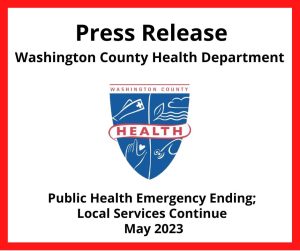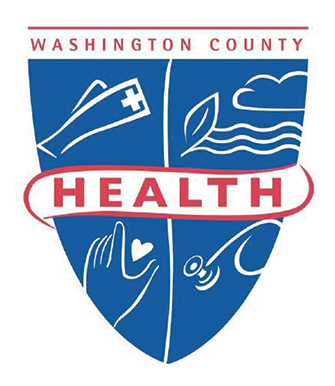
As the public health emergency for COVID-19 comes to an end at the federal level, the pandemic has seemingly ended with a whimper instead of a bang. For the teams at the Washington County Health Department, the work continues.
“We will always be concerned about those who have needs and are unsure where to go or who to ask for help with their health,” explained Earl Stoner, county health officer. “Our services, including vaccinating and testing county residents for the COVID-19 virus that is now a part of our world, are available, usually at no cost, to our under- and uninsured neighbors, friends and family.”
The small, but mighty teams at the health department will continue their pattern of utilizing available state and federal resources and supplies as long as those remain available, to steadily help control the narrative of the COVID-19 virus in Washington County.
As an agency under the umbrella of both county leadership and the Maryland Department of Health (MDH), the pandemic response led by Stoner’s teams had to support the guidance they were receiving. This directly affected when vaccinations were offered to specific age groups; where samples to test for COVID-19 were sent for laboratory follow up; when masking was mandated; and how cases and outbreaks were reported and tracked.
While the public didn’t necessarily see the “lanes” the health department worked within throughout the pandemic, what is now apparent is all that was accomplished.
Numbers Worth Noting
The totals so far for COVID-19 response work by Washington County Health Department teams include:
- Administered nearly 17,000 vaccinations
- Swabbed close to 10,000 people to test for COVID-19
- Contact tracers had nearly 28,500 communications with the public
- Investigated 729 total COVID-19 outbreaks
- Distributed more than 59,000 free, at-home tests
- Handed out approximately 178,500 free masks in our community
“Measures that we could take to try and keep the virus from spreading in our community were vital, which is why the work behind the scenes by our contact tracing team was so important,” said Stoner.
Until quarantines were taken out of the protocol, contact tracers were assigned cases of anyone reported as testing positive for COVID-19. This led to initial support calls to provide isolation guidelines; community resource information for continuing symptoms; treatment options when available; and to collect details on where the person had been and close contacts they had. Contact was then made with all of these individuals as well to offer much of the same information on how to stay well and the best way to isolate and avoid spreading the virus any further.
Additionally, the contact tracing team and staff from the nursing department were very involved in monitoring and reporting on outbreaks at area schools, businesses, residential complexes and health care facilities. They provided county level data on these events to MDH so that state officials were aware of where and how the virus was affecting Marylanders.
“We were very grateful to all of our partners in the county who provided support to residents and businesses in the COVID-19 response, especially the emergency operations division of the government, local officials, the hospital and all of the first responders,” said Stoner. “A real-world pandemic in the U.S. in our lifetime was not something any of us ever expected, but we’ve all learned a great deal from the experience which can only benefit our community in the future.”
Published article from HeraldMailMedia.com: https://www.heraldmailmedia.com/story/news/local/2023/05/11/washington-county-maryland-sees-more-than-600-deaths-in-covid-19-pandemic/70189572007/

